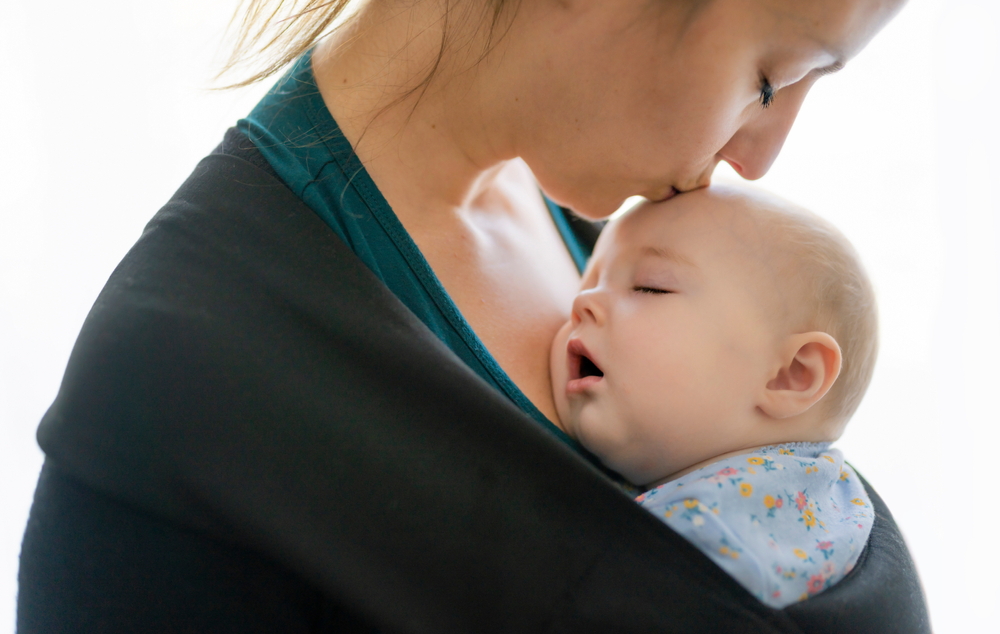Once our baby is born we instantly fall in love with them and want to spend as much time with them as possible, we can’t get enough of our little bundle of joy. Babies too love being close to and cradled in our arms. However, much as we’d like to, it’s not feasible and not advisable to carry the baby in our arms all the time. There are times we need to give our tired arms some rest or need our hands free to do other things. The beauty of baby carriers is that they keep our hands free, and keep our baby safe. Unlike prams and strollers, baby carriers are compact enough for us to maneuver in crowded places and convenient for us to enter buses, trains, and move around the market, mall or shopping center.
Lucky for us there is a wide range of baby carriers available to choose from that suit our needs as well as the needs of the baby. Baby carriers aren’t on the list of essential items required for a baby as you will still be able to move about either by carrying your baby in your arms or by placing them in a pram or stroller but it does make things more convenient for us especially on those days when we have lots to get done and our baby is a bit fussy.
Let us closely look into the different types of baby carriers which are broadly classified into four types-
➢ Wraps-
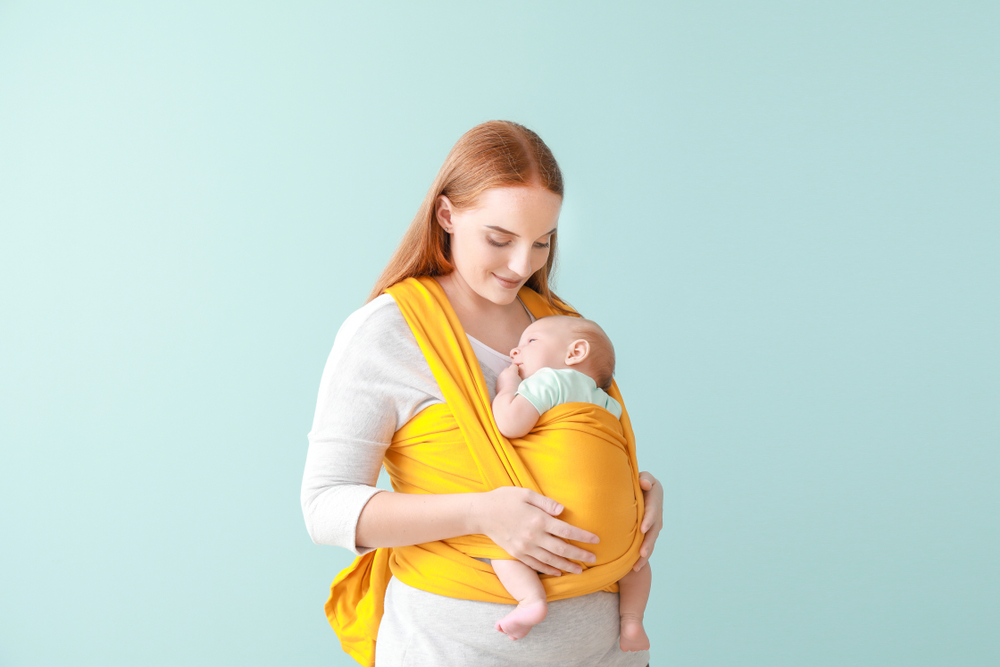
A baby wrap carrier is usually a long piece of stretchable fabric that you use to tie a knot around yourself and create a pouch on your chest, hip or back for the baby to sit in. Wraps mimic the cozy feel of the womb and are generally used as newborn baby carriers and for younger babies. When worn correctly the baby wrap distributes the weight of the baby across your shoulders and hips.
Advantages- It comes in one size fits all, so it makes it convenient for multiple people to carry the baby. Baby’s weight is equally distributed so it doesn’t hurt your back.
Disadvantages – It takes a lot of practice to get the hang of wrapping the cloth correctly and securely. It can be restrictive for older babies. When using it as a newborn carrier, your baby’s head will need support.
➢ Slings-
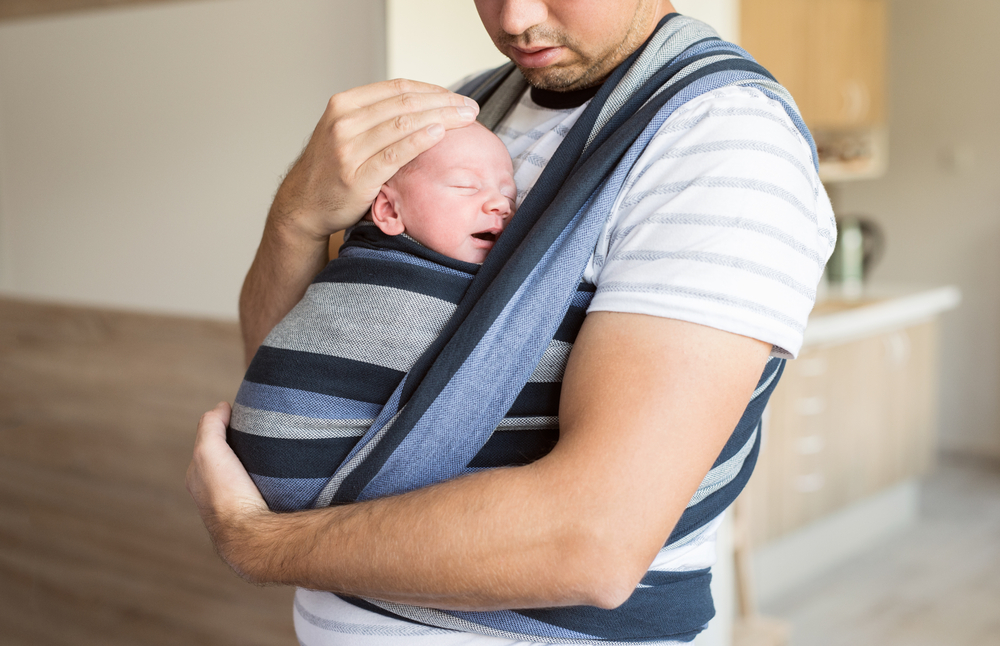
A baby sling is another form of baby wearing which uses a long and wide strip of fabric that wraps around your body and across one shoulder. It provides comfort to babies by keeping them close to you while keeping your hands free.
Advantages – Baby slings are comparatively simpler to use than baby wraps. They can be worn in a number of ways, across your chest, across your back and even on your hip.
Disadvantages- Baby slings do not distribute the baby’s weight evenly so wearing it long term or with older heavier babies will cause some pain in the neck and back.
➢ Hybrid carriers-
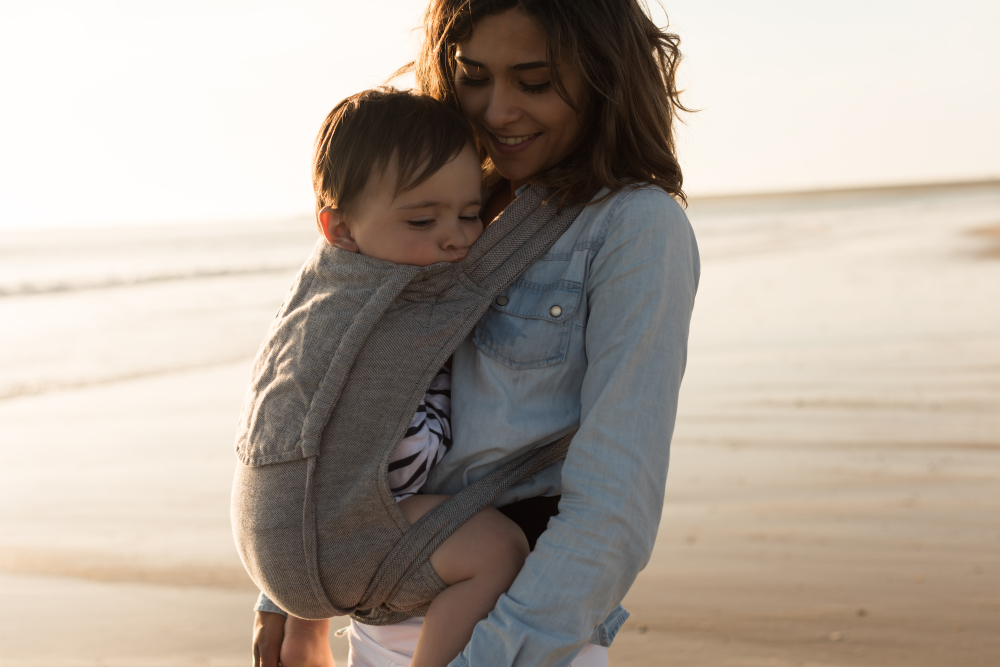
A hybrid carrier is a combination of a structured baby carrier and a baby wrap. It offers the closeness and intimacy of the wrap along with the additional support of the structured carrier. Can be used with older babies and in many ways, either in front or your back, with the baby facing you or away from you.
Advantages – Hybrid baby carriers are gaining popularity as it is very easy and convenient to use. It is also comfortable and distributes the weight of the baby across both the shoulders. It also has the added benefit of having restraints which slings and wraps don’t have.
Disadvantages – It is difficult to find a ‘one size fits all’ hybrid carrier. It needs to be adjusted each time a different person carries the baby which makes it rather inconvenient.
➢ Structured Carriers-
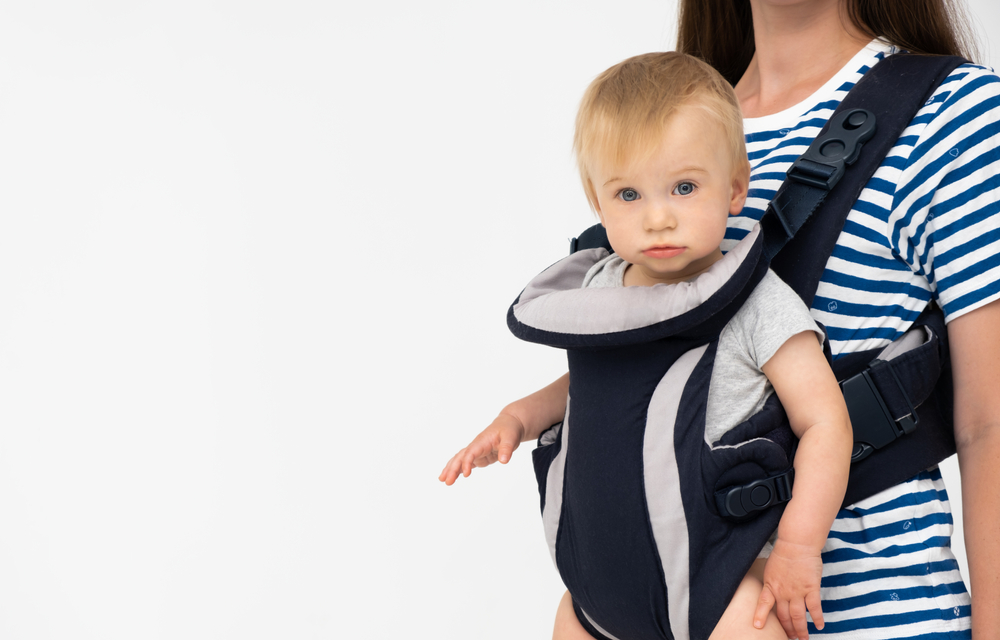
A Structured carrier or Soft structured carrier (SSC) has prebuilt panels with well-defined arm straps, waist straps and buckles. Easily let you carry your baby on your chest or back. These are made with a soft fabric, have a good amount of padding and make use of webbing and buckles to secure your baby. Keeping in mind its versatility, the age range, the support and security offered.
Advantages – These are designed to be used up to toddlerhood when they don’t need to be carried anymore. Thai helps if you don’t want to buy too many carriers. These also can be used in various positions-on your chest or back, with the baby facing inwards or outwards.
Disadvantages – it is more expensive than the other types of baby carriers. It is not recommended for babies below 4 months of age as they have limited head control which increases the risk of airway blockage and neck injuries.
It takes time to decide which is the best baby carrier for you and your little one. Avoid buying one just because it is the most attractive. We advise you to try on different types of baby carriers and see which ones you and your baby like, depending on the age of the child, which one offers proper support and is comfortable for you and your little one.
It is important to know if the carrier is not out on properly or if the baby is not put into the carrier correctly, they risk suffocation because they are not able to move if they are in a dangerous position or if their airway is blocked. Use this T.I.C.K.S. rule to help keep your baby safe especially when using slings and wraps.
➔ T – Tight – make sure the baby carrier is secured tight with the baby’s position high and upright with their head supported. There should be no loose fabric which may cause the baby to slump. This could restrict breathing.
➔ I- In view at all times – Simply by looking down you should be able to see your baby thereby making it easier to check that your baby’s face, nose is uncovered and they are properly supported.
➔ C- Close enough to kiss- ensure your baby is close enough to you with their head upright so that just by bending your head you can kiss their head.
➔ K- Keep chin off chest- A safe position for your baby is to see that their chin is away from their chest. Avoid curling your baby as their head will be towards their chest and this can restrict breathing. Regularly check and adjust your baby position as babies can be in distress even without moving.
➔ S- Supported back – when in a sling or wrap, support your baby’s back in its natural position with their chest and tummy against yours. They especially need support when you need to bend over, place your hand on their back and bend at your needs not the waist, to avoid straining your back and to prevent your baby from falling out.
The most important thing when using any type of baby carrier is to ensure correct baby positioning, in the initial days to avoid suffocation and when they grow a bit older for healthy hip positioning. A baby carrier should allow your baby’s to spread adequately so that they can straddle your body better. Their knees should be apart, hips should be bent and thighs supported. Healthy hip positioning helps in the proper hip development and decreases the chances of Hip dysplasia.
Other things to keep in mind –
- The best baby carriers, ensure that you can the bay are comfortable.
- The material used is durable and of good quality.
- The straps, buckles, rings etc. are strong, sturdy and durable.
- Make sure you understand the safety instructions and the correct usage of your carrier, ask the shop personnel to help you out if required.
- You are comfortable with how to put on or tie the carrier before putting your baby in it.
- As far as possible put on or take out your baby with someone’s assistance or while sitting down.
- Check that your baby can move their head, hands and legs when placed in the carrier and that there is nothing obstructing their faces.
- Refrain from using the baby carrier on hot and warm days, the outside temperature coupled with your body temperature will unnecessarily cause your baby to overheat.
While you enjoy having your baby close to you at all times, it is advisable to give yourself a break and put the bay down sometimes. Do remember to change the carrier (if required) once the age criteria is met and finally stop carrying your baby once they become too big or heavy.
Click here to read more about other types of baby carriers like baby bouncers, swings, rockers, baby jumpers and so on.
EuroKids is a well-recognized and trusted brand for early childhood care and education by parents all over India. Our centers are safe and the materials and equipment are child and age appropriate with various safety features in place and regularly checked amongst other things.





